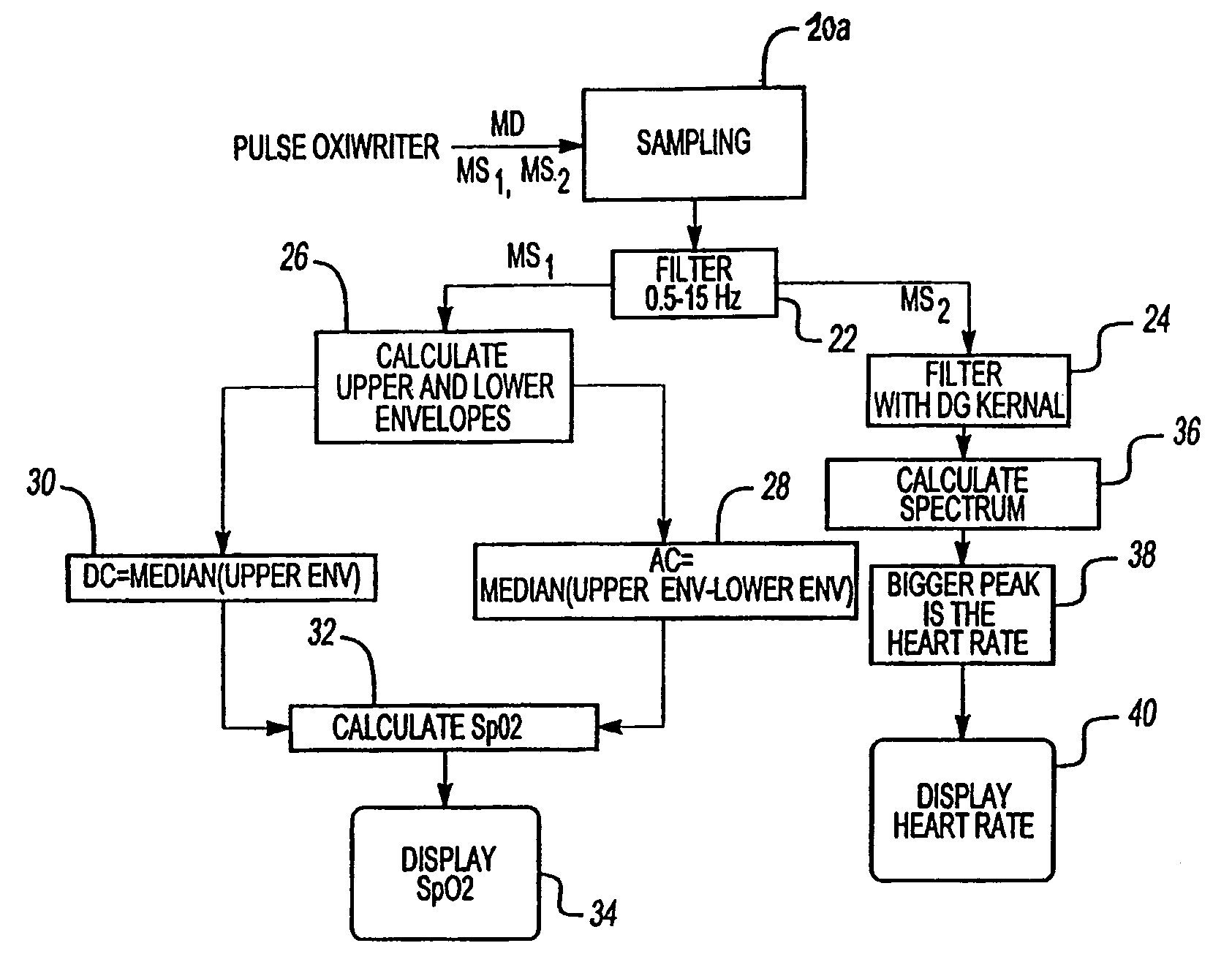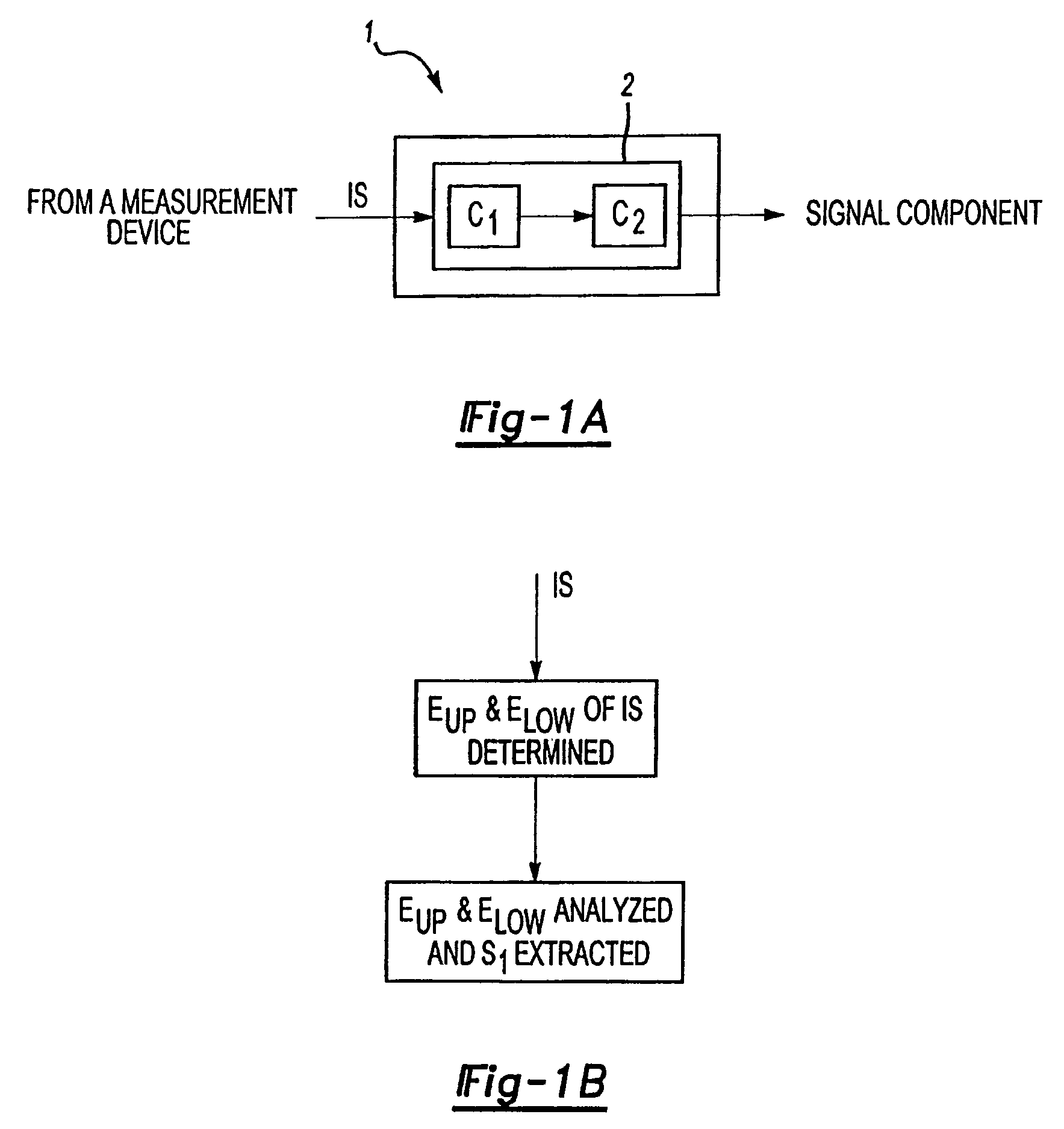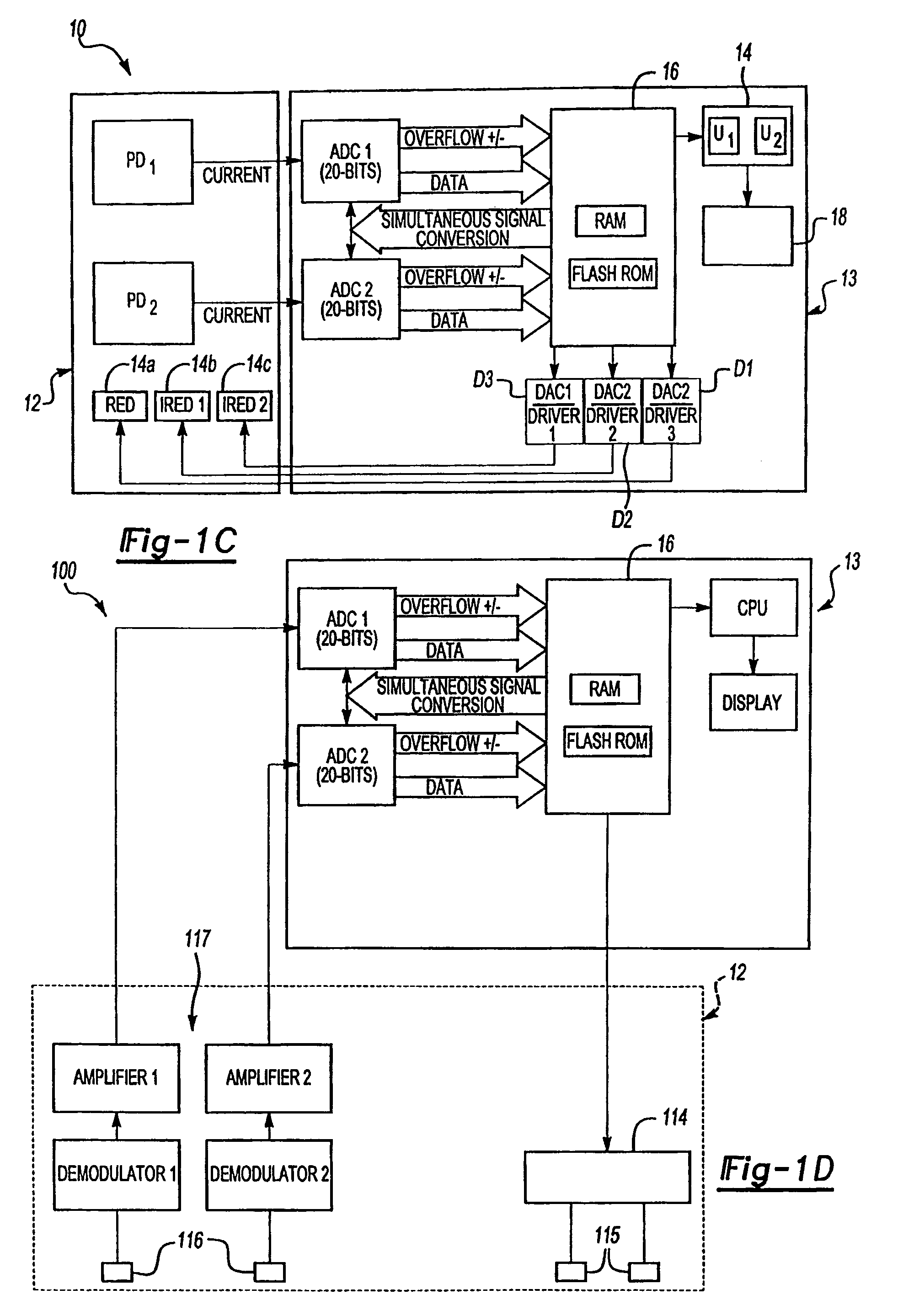Signal processing method and device for signal-to-noise improvement
a signal processing and signal-to-noise improvement technology, applied in the field of signal-to-noise improvement techniques, can solve the problems of more difficult to perform, unique problems that cannot always be solved, and the dc signal of the r and ir photoplethysmogram in reflection pulse oximetry can be adversely affected, and achieve the effect of enhancing the signal componen
- Summary
- Abstract
- Description
- Claims
- Application Information
AI Technical Summary
Benefits of technology
Problems solved by technology
Method used
Image
Examples
Embodiment Construction
[0062]With reference to the FIGS. 1A and 1B, and in operation, the present invention provides a method and device for processing a measured signal. More specifically, the present invention extracts a signal component from the noise component and suppresses a noise component.
[0063]A control unit, generally designated 1, constructed and operated according to the invention for processing an input signal IS coming from a measurement device comprises a data processing and analyzing utility 2 having two software modules (components) C1 and C2 operating together to extract or enhance a signal component and suppress a noise component contained in the input signal. The software component C1 processes the input signal, and the software component C2 analyzes the processed data to either extract or enhance the signal component.
[0064]As shown in FIG. 1B, when a signal component S1 in the form of a periodic signal with well-defined peak-to-peak value, e.g., sinusoidal-like signal, is to be extrac...
PUM
 Login to View More
Login to View More Abstract
Description
Claims
Application Information
 Login to View More
Login to View More - R&D
- Intellectual Property
- Life Sciences
- Materials
- Tech Scout
- Unparalleled Data Quality
- Higher Quality Content
- 60% Fewer Hallucinations
Browse by: Latest US Patents, China's latest patents, Technical Efficacy Thesaurus, Application Domain, Technology Topic, Popular Technical Reports.
© 2025 PatSnap. All rights reserved.Legal|Privacy policy|Modern Slavery Act Transparency Statement|Sitemap|About US| Contact US: help@patsnap.com



